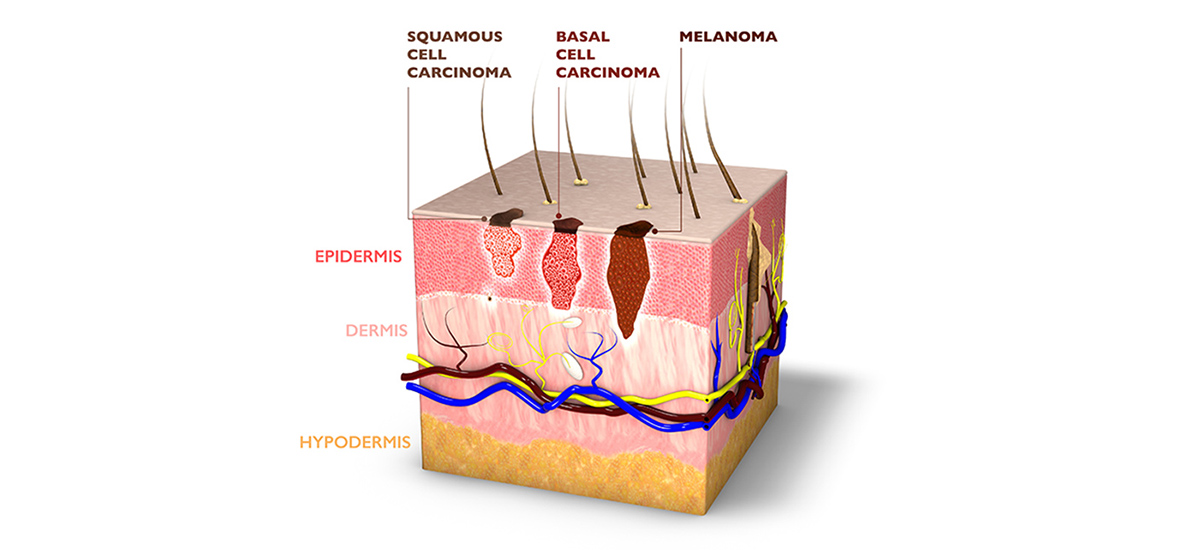
Skin Cancer Removal / Reconstruction
REMOVING THE SOURCE. REPAIRING THE DAMAGE.

Skin cancer is the most common form of cancer in the United States, with more than a million cases each year. Although cancer can affect skin anywhere on the body, it mostly appears on skin exposed to the sun.
Skin cells die every day and new ones form to replace them. If this process does not work properly, due to damage to DNA, skin cancer can form. If new cells form when they are not needed, or if older cells do not die, a growth of tissue, or tumor, can form. DNA damage can result from exposure to ultraviolet radiation from sunlight or tanning lamps. In some instances, skin cancer can affect skin that has not been exposed to the sun. Some factors can increase the risk of skin cancer, including moles, fair skin, age, heredity, and a weakened immune system.
The goal of skin cancer removal/reconstruction is to eliminate the cancerous lesion(s) and all malignant cells and return the lesion removal site to a normal appearance.
Skin Cancer Removal
BSSNY plastic surgeons can remove skin cancer in a variety of different ways, depending on the location and size of the lesion.
Small or contained lesions are able to be removed with excision – a simple surgical process that removes the lesion from the designated area of concern. Closure is often performed at the time of the excision.
For skin cancers that cover a large area either above and/or below the skin’s surface, frozen sections may be used. Frozen sections are small parts of the tissue that are removed and immediately sent to the pathologist. These pieces of tissue are then quickly frozen so they can be examined for cancer cells in real-time. This helps your plastic surgeon make sure that all the cancer has been removed.
Alternatively, your plastic surgeon may recommend a specialized technique called Mohs surgery. Mohs surgery is a procedure that is performed through the use of multiple specially prepared frozen sections. The goal is to look for a clear margin – an area where the skin cancer has not spread. If clear margins are found, the resulting wound can be reconstructed. If clear margins are not present, the surgeon will remove more tissue until the entire region has a clear margin.
Skin Cancer Reconstruction
If the skin cancer lesion is particularly large, or has been removed with frozen sections, or is likely to cause disfigurement, your plastic surgeon may opt to reconstruct the area using a local flap (also called “adjacent tissue rearrangement”). In this procedure, healthy, adjacent tissue is repositioned over the wound. The suture line is positioned to follow the natural creases and curves of the face if possible, to minimize the look of any resulting scar. Several variations of local flap procedures may be used to reconstruct a specific area of the face or body.
Your surgeon may choose to treat your wound with a skin graft instead of a local flap. A skin graft is a thin bit of skin removed from one area of the body and relocated to the wound site.









